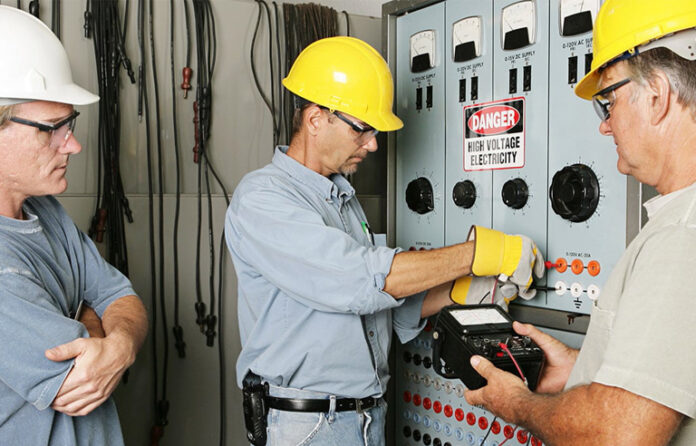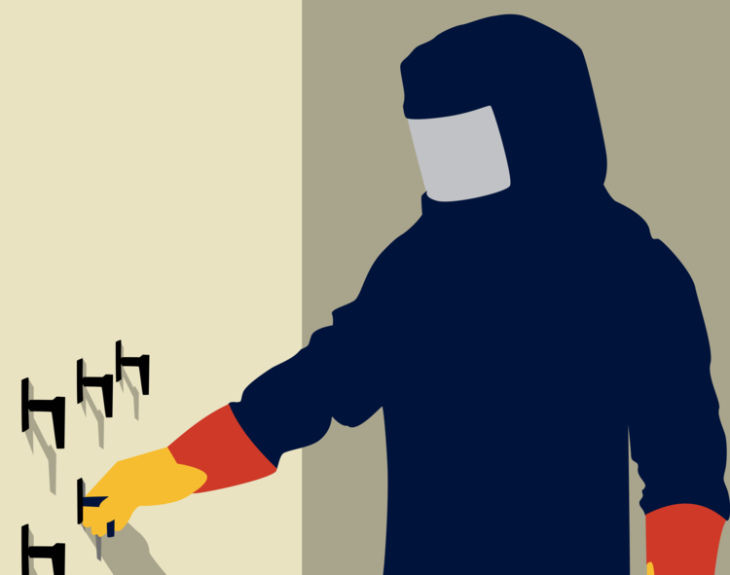Any office or working setting nowadays requires electricity to run. Electrical equipment, including computers and machinery, is potentially dangerous and can result in shock and burn injuries if handled or maintained incorrectly.
Although the majority of general employees don’t require specific electrical safety training, it’s nevertheless necessary to adhere to electrical safety-related work practices if you deal with electricity but are unable to directly touch electrical components for the sake of others’ safety.
To assist you prevent electrical risks at work, here are the electrical safety tips you need to always adhere to:
Secure Electrical Hazards with Proper Physical Barriers
Employees should always be shielded from any electrical dangers by physical barriers.
Electrical panels must always keep their cabinet doors shut, and they shouldn’t have any openings where workers may accidentally touch exposed wires.
Use shields, barriers, or insulating materials if cabinets can’t be closed or if an electrical danger can’t be completely enclosed.
Physical barriers must be installed, for instance, if a licensed electrician is maintaining an electrical panel and has to leave the panel open. In this case, it is best to keep people outside the work area.
The area in front of the electrical panel has to be maintained clear of any obstructions, and warning signs should be put up to alert staff to the danger.
Use Caution with Cleaning Materials and Conductive Equipment
Always presume that electrical components are live and take precautions as necessary if you are operating in an area where there is an electrical danger. Avoid using conductive instruments there.
Whether you are cleaning the area, be aware that some cleaning supplies are also conductive and call for extra care. Steel wool and metalized cloth are electrically conductive, as are solvent- and water-based cleaning products.
Away from active electrical components and equipment, keep any conductive tools and cleaning agents.
Use Lockout/Tagout and De-Energise Equipment
Before any work may be done on or near exposed, live electrical components, they must first be de-energized.
By locking and tagging out the entire system or certain components of the system following your company’s Lockout/Tagout policy, you may prevent mishaps and isolate electrical energy.
The purpose of lockout/Tagout is to safeguard workers from electrical risks while they do service and maintenance tasks.
Avoid any Possible Contact with Live Electronic Current
Avoiding electrical dangers is the greatest way to keep safe. Electrical currents more than 50V should not be interacted with by or nearby untrained individuals.
Maintain a safe distance if you must operate close to an electrical danger or equipment that uses more than 50V.
Before you start your operations, make sure that all panel doors are closed and that there are no exposed wires near your work area.
Make Sure Electrical Equipment Is Used Safely
All electrical equipment should be used safely to protect everyone in the workplace.
Employees should be cautious when handling electrical cords:
- Always pull on the plug head while unplugging a cord rather than the cord itself.
- Electrical cables shouldn’t be pressed or overextended.
- Don’t use staples to secure cables
- Electrical equipment should not be hung from cables.
Additionally, before usage, every wire and outlet in the office has to be visually examined for exterior flaws. Do not use any device that has a damaged cable or plug.
Protection of Earth Sleeving Cables from the Surrounding
As the earth-sleeving (CPC) is an insulator and not a live conductor, it does not require insulation in the same manner as live and neutral conductors do. Instead of shielding someone from the cable, it needs protection from its surroundings.
When installed, naked earth wires must be protected by an “earth sleeve,” which is available in all sizes from electrical retailers and the majority of home improvement centers.
In lighting circuits, 1.5mm is most often used. Its length when installed cannot be more than 110 meters, and it has a 5 amp fuse.
This assortment of green/yellow earth protection sleeving may be used to cover electrical insulation and earth wire for earth identification.
Yes, the ground wire in the cable is normally uninsulated once the outer sheath has been removed, assuming that it has a twin and earth wiring, which is what it seems like from your description.
A strip of yellow and green sleeving is typically used to cover the ground wire and act as basic insulation.
The circuit-protective conductor does not need to be insulated because it is not a live conductor; rather, it merely has to be shielded from the elements (which it is, by the cable sheath).
Be Aware of Electrical Lines Above When Working Overhead
Be cautious of electrical wires when conducting any repair or work overhead. The majority of workplaces may have electrical equipment and sections above the floor that may only be accessed via ladders or high platforms.
When undertaking overhead work, utilize a portable ladder with non-conductive side rails and keep at least 10 feet clear of any exposed electrical wires.
Be Very Cautious When Using Flammable Materials
Where flammable vapors, fumes, or dust are present, electrical equipment that can ignite must not be utilized.
The only exceptions to this rule are when electrical energy sources are locked out and isolated by trained individuals before these potentially combustible materials are utilized, or when the electrical equipment is made to operate under these circumstances.
Working on Live Electrical Wires Should Only Be Done By Qualified Personnel.
Avoid touching live electrical wires if you come across them. On active electrical lines, only trained professionals should perform any work. Hazardous electrical equipment must follow the same electrical safety precaution.
Only trained individuals should approach and handle any live electrical danger. You should alert the relevant electrical safety staff if you detect a live electrical line that is not being attended to so they can put up physical safety barriers right away.
Always Comply with the Electrical Safety Work Practices of Your Company
Depending on the electrical equipment and risks present in your sector and workplace, every organization has different electrical safety work procedures.
To keep yourself and other employees safe, it’s crucial to constantly adhere to your company’s unique electrical safety work procedures.
Electrical Shock Can Potentially Fatal
An electrical component should always be treated as though it were live. Electrically active components have the same appearance as de-energized components. It’s best to presume that any electrical component is active to assure safety.
Take steps to safeguard yourself and keep power moving in the right direction. When it comes to electricity, you can never be too careful.
Conclusion
Electrical hazards are widespread yet harmful in the workplace. Work with electrical components should only be performed by someone who is certified to do so. Otherwise, avoiding contact with live electrical currents is always in your best interest.



















